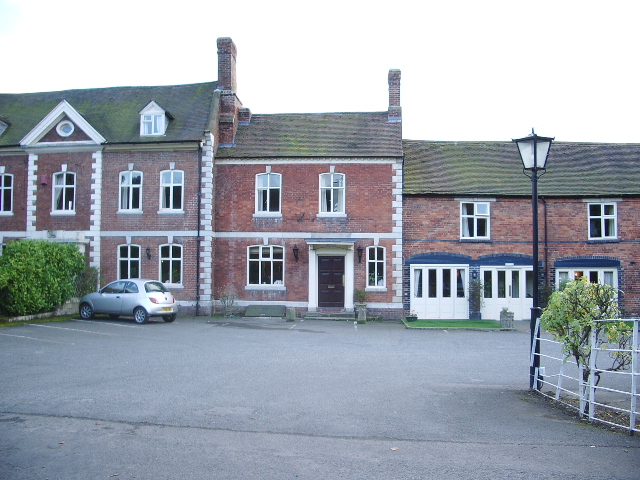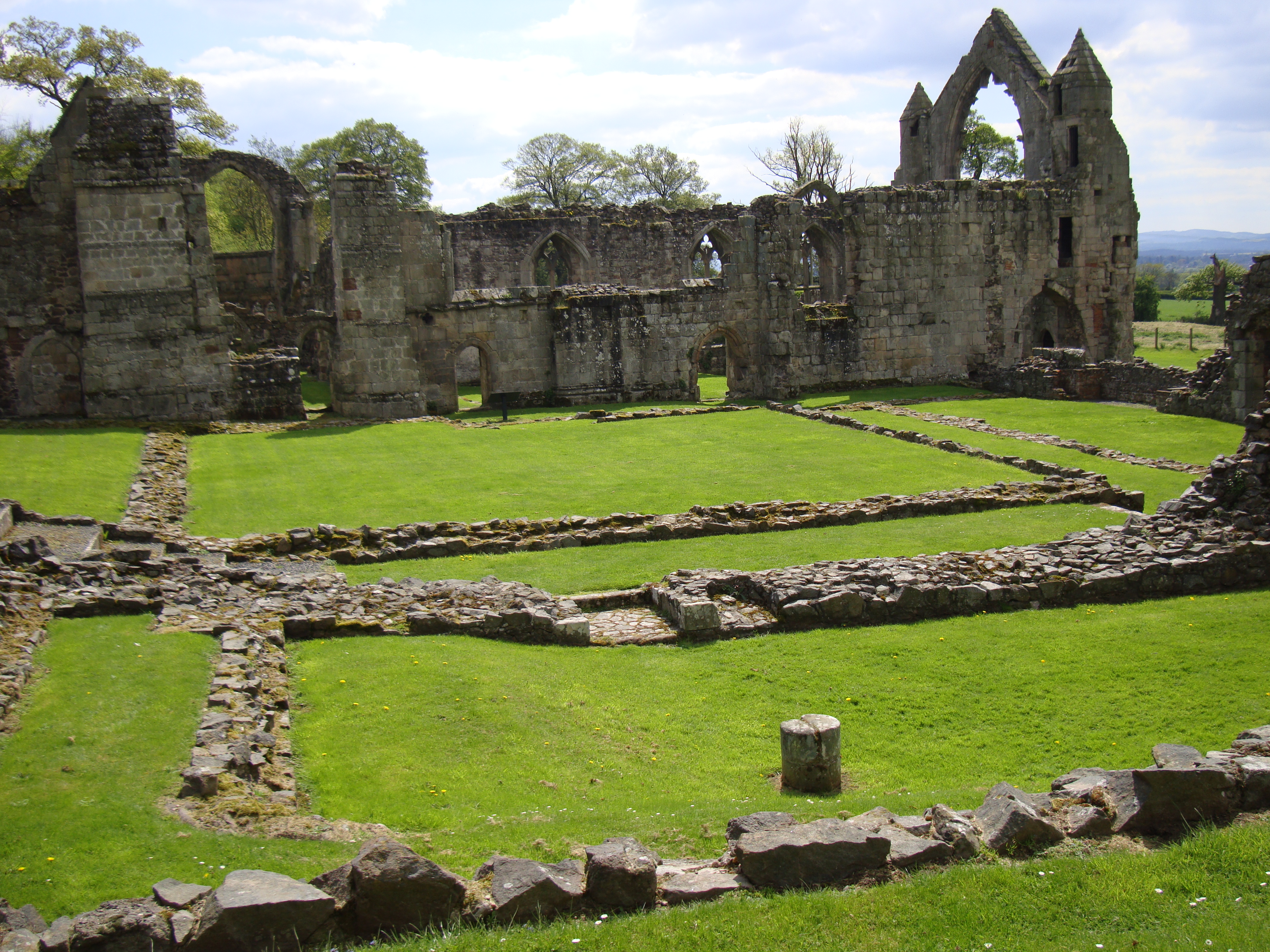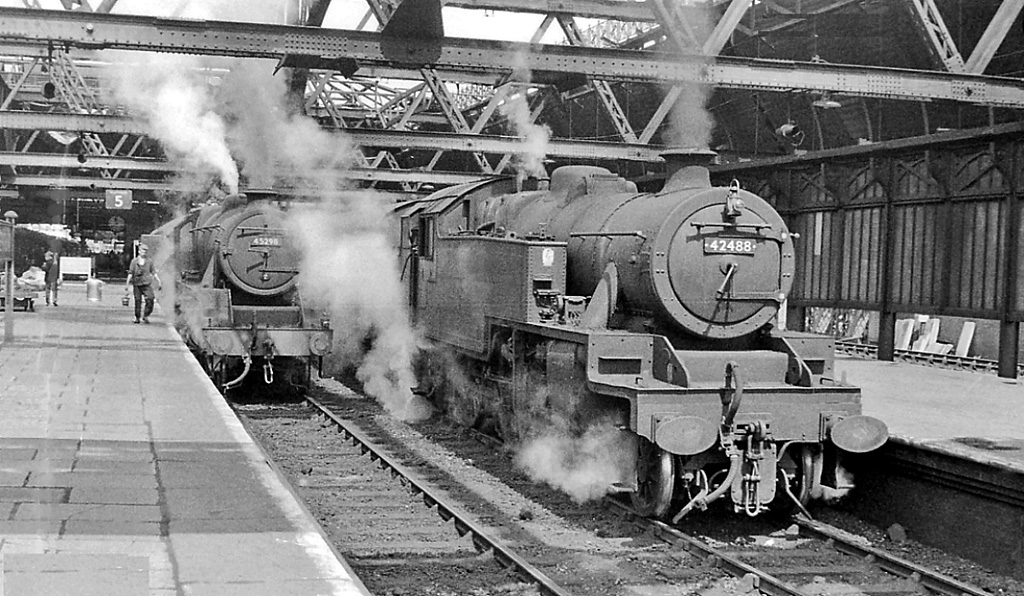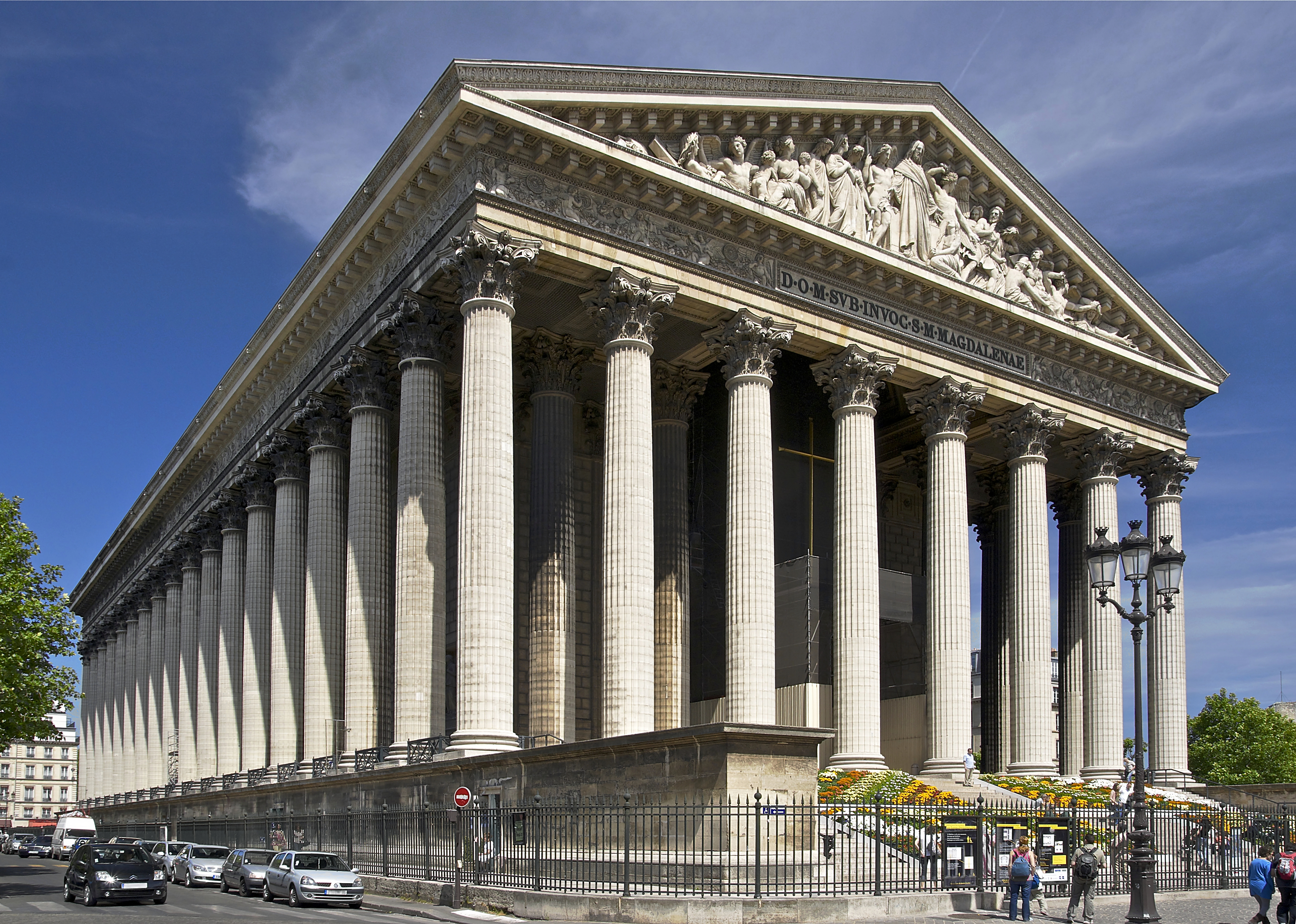|
Grinshill
Grinshill is a small village, and civil parish in Shropshire, England, United Kingdom. The parish is one of the smallest in the district. The population of the civil parish at the 2011 census was 274. Grinshill Hill rises above the village to above sea level. Grinshill is near (east) to the village of Clive. The A49 runs just further to the east of the village. Stone has been quarried at Grinshill since at least the twelfth century. Grinshill stone is a Triassic sandstone that was described by the Pevsner Architectural Guides as the "pre-eminent" building stone of Shropshire, and has been used in buildings as varied as Haughmond Abbey, Shrewsbury railway station and Welsh Bridge. Most notably, Grinshill stone has been used to make the lintels and door surround of Number 10 Downing Street and in the building of Chequers. The village church Church may refer to: Religion * Church (building), a building for Christian religious activities * Church (congregation), a local c ... [...More Info...] [...Related Items...] OR: [Wikipedia] [Google] [Baidu] |
Listed Buildings In Grinshill
Grinshill is a civil parish in Shropshire, England. It contains 20 listed buildings that are recorded in the National Heritage List for England. Of these, one is at Grade II*, the middle of the three grades, and the others are at Grade II, the lowest grade. The parish contains the village of Grinshill and the surrounding countryside. To the north of the village is a former quarry that produced sandstone Sandstone is a clastic sedimentary rock composed mainly of sand-sized (0.0625 to 2 mm) silicate grains. Sandstones comprise about 20–25% of all sedimentary rocks. Most sandstone is composed of quartz or feldspar (both silicates) ... described as "the finest building stone in Shropshire". This is used in the construction of many of the buildings in the village and elsewhere in the county. Most of the listed buildings are houses and associated structures, farmhouses and farm buildings, and the other listed buildings consist of a church, and items ... [...More Info...] [...Related Items...] OR: [Wikipedia] [Google] [Baidu] |
Clive, Shropshire
Clive is a village and civil parish in Shropshire, England, United Kingdom. Clive is situated around the west side of Grinshill Hill. Grinshill sandstone, from the nearby quarry at Grinshill is used throughout the village for building material from walls and houses to the village church. The English Restoration dramatist William Wycherley was born at Clive. Travel Road Clive is situated just off the A49, and the B5476. Rail The village is served by Yorton railway station, located on the Welsh Marches Line between Shrewsbury and Wem. The majority of services are between Shrewsbury and Crewe, operated by Transport for Wales, as well as some additional services to Manchester Piccadilly, Hereford, Cardiff Central, Swansea and Carmarthen. Bus The village is served by the 511 bus route, operated by Arriva Midlands North, which runs between Shrewsbury and Whitchurch via Wem. Some services terminate in Wem and do not continue to Whitchurch. Community life In the centr ... [...More Info...] [...Related Items...] OR: [Wikipedia] [Google] [Baidu] |
Haughmond Abbey
Haughmond Abbey ( ) is a ruined, medieval, Augustinian monastery a few miles from Shrewsbury, England. It was probably founded in the early 12th century and was closely associated with the FitzAlan family, who became Earls of Arundel, and some of their wealthier vassals and allies. It was a substantial, successful and wealthy house for most of its four centuries, although evidence of abuses appeared before its dissolution in 1539. The buildings fell into disrepair and the church was largely destroyed, although the remains of some of the domestic buildings remain impressive. The site is now in the care of English Heritage and is open to the public during the summer. Origins The cartulary of the abbey begins with a statement of its foundation story, as understood at the time it was written down, probably in the Late Middle AgesDodsworth and Dugdale''Monasticon Anglicanum'', p. 46/ref> R. W. Eyton, the assiduous Victorian historian of Shropshire, critically considered the ... [...More Info...] [...Related Items...] OR: [Wikipedia] [Google] [Baidu] |
Civil Parishes In Shropshire
This is a list of Civil parishes in England, civil parishes in the Ceremonial counties of England, ceremonial county of Shropshire, England. There are 230 civil parishes. Population figures are unavailable for some of the smallest parishes. See also * List of civil parishes in England * :Former civil parishes in Shropshire References External links Office for National Statistics : Geographical Area Listings {{Shropshire Populated places in Shropshire, Civil parishes Local government in Shropshire, Civil parishes Lists of civil parishes in England, Shropshire Civil parishes in Shropshire, * Shropshire-related lists, Civil parishes ... [...More Info...] [...Related Items...] OR: [Wikipedia] [Google] [Baidu] |
Welsh Bridge
The Welsh Bridge is a masonry arch viaduct in the town of Shrewsbury, England, which crosses the River Severn. It connects Frankwell with the town centre. It is a Grade II* listed building. The bridge was designed and built from 1793 to 1795 by John Tilley and John Carline (whose namesake father was a mason on the English Bridge), who had built Montford Bridge for Thomas Telford. It replaced the medieval St George's Bridge. Four of the arches span 43 feet 4 inches, while the fifth and central arch is 46 feet 2 inches. The bridge is 30 feet wide, and built from Grinshill sandstone. In total it is 266 feet long. It was completed in 1795 at a cost of £8,000. On the south end of the bridge, on the junction with Victoria Avenue, one of the parapets of the bridge has the words "Commit No Nuisance" chiselled into the stone. This is an archaic injunction not to urinate in public. Gallery File:WelshBridgeCB2.jpg, The Welsh Bridge, with the river at flood level. F ... [...More Info...] [...Related Items...] OR: [Wikipedia] [Google] [Baidu] |
Shrewsbury Railway Station
Shrewsbury railway station is in Shrewsbury, Shropshire, England. Built in 1848, it was designated a grade II listed building in 1969. The station is north west of Birmingham New Street. Many services starting at or passing through the station are bound for Wales; it is operated by Transport for Wales, although the station is also served by Avanti West Coast and West Midlands Railway services, and is one of the key network hubs of Transport for Wales. History The station was formerly known as Shrewsbury General and is the only remaining railway station in the town; Shrewsbury Abbey, as well as other small stations around the town, having long closed. Shrewsbury railway station was originally built in October 1848 for the county's first railway — the Shrewsbury to Chester Line. The architect was Thomas Mainwaring Penson of Oswestry. The building is unusual, in that the station was extended between 1899 and 1903 by the construction of a new floor underneath the original ... [...More Info...] [...Related Items...] OR: [Wikipedia] [Google] [Baidu] |
Church (building)
A church, church building or church house is a building used for Christian worship services and other Christian religious activities. The earliest identified Christian church is a house church founded between 233 and 256. From the 11th through the 14th centuries, there was a wave of church construction in Western Europe. Sometimes, the word ''church'' is used by analogy for the buildings of other religions. ''Church'' is also used to describe the Christian religious community as a whole, or a body or an assembly of Christian believers around the world. In traditional Christian architecture, the plan view of a church often forms a Christian cross; the center aisle and seating representing the vertical beam with the bema and altar forming the horizontal. Towers or domes may inspire contemplation of the heavens. Modern churches have a variety of architectural styles and layouts. Some buildings designed for other purposes have been converted to churches, while many ori ... [...More Info...] [...Related Items...] OR: [Wikipedia] [Google] [Baidu] |
Chequers
Chequers ( ), or Chequers Court, is the country house of the Prime Minister of the United Kingdom. A 16th-century manor house in origin, it is located near the village of Ellesborough, halfway between Princes Risborough and Wendover in Buckinghamshire, United Kingdom, at the foot of the Chiltern Hills. It is about north-west of central London. Coombe Hill, once part of the estate, is located northeast. Chequers has been the country home of the serving Prime Minister since 1921 after the estate was given to the nation by Sir Arthur Lee by a Deed of Settlement, given full effect in the Chequers Estate Act 1917. The house is listed Grade I on the National Heritage List for England. Origin of the name The name "Chequers" may derive from an early owner of the manor of Ellesborough in the 12th century, Elias Ostiarius (or de Scaccario). The name "Ostiarius" meant an usher of the Court of the Exchequer and ''scacchiera'' means a chessboard in Italian. Elias Ostiarius's coa ... [...More Info...] [...Related Items...] OR: [Wikipedia] [Google] [Baidu] |
10 Downing Street
10 Downing Street in London, also known colloquially in the United Kingdom as Number 10, is the official residence and executive office of the first lord of the treasury, usually, by convention, the prime minister of the United Kingdom. Along with the adjoining Cabinet Office at 70 Whitehall, it is the headquarters of the Government of the United Kingdom. Situated in Downing Street in the City of Westminster, London, Number 10 is over 300 years old and contains approximately 100 rooms. A private residence for the prime minister's use occupies the third floor and there is a kitchen in the basement. The other floors contain offices and conference, reception, sitting and dining rooms where the prime minister works, and where government ministers, national leaders and foreign dignitaries are met and hosted. At the rear is an interior courtyard and a terrace overlooking a garden. Adjacent to St James's Park, Number 10 is approximately from Buckingham Palace, the London resid ... [...More Info...] [...Related Items...] OR: [Wikipedia] [Google] [Baidu] |
Shropshire
Shropshire (; alternatively Salop; abbreviated in print only as Shrops; demonym Salopian ) is a landlocked historic county in the West Midlands region of England. It is bordered by Wales to the west and the English counties of Cheshire to the north, Staffordshire to the east, Worcestershire to the southeast, and Herefordshire to the south. A unitary authority of the same name was created in 2009, taking over from the previous county council and five district councils, now governed by Shropshire Council. The borough of Telford and Wrekin has been a separate unitary authority since 1998, but remains part of the ceremonial county. The county's population and economy is centred on five towns: the county town of Shrewsbury, which is culturally and historically important and close to the centre of the county; Telford, which was founded as a new town in the east which was constructed around a number of older towns, most notably Wellington, Dawley and Madeley, which is tod ... [...More Info...] [...Related Items...] OR: [Wikipedia] [Google] [Baidu] |
North Shropshire (UK Parliament Constituency)
North Shropshire is a constituency in the county of Shropshire, represented in the House of Commons of the UK Parliament by Helen Morgan of the Liberal Democrats after a by-election on 16 December 2021. The former MP, Owen Paterson of the Conservatives, resigned his seat on 5 November 2021 when faced with suspension from the Commons for a breach of advocacy rules and the consequent possibility of a recall petition. The seat had previously been a safe seat for the Conservatives. Constituency profile The area is rural and north of Shrewsbury, west of Newcastle-under-Lyme in the Stoke conurbation, south of Cheshire and Wrexham, having five small towns (in size order): Oswestry, Market Drayton, Whitchurch, Wem and Ellesmere. Residents' health and wealth are similar to UK averages. History From its first creation in 1832 to the abolition of the first creation in 1885 the constituency covered approximately half of the county and elected two members, formally Knights of the Shir ... [...More Info...] [...Related Items...] OR: [Wikipedia] [Google] [Baidu] |
Pevsner Architectural Guides
The Pevsner Architectural Guides are a series of guide books to the architecture of Great Britain and Ireland. Begun in the 1940s by the art historian Sir Nikolaus Pevsner, the 46 volumes of the original Buildings of England series were published between 1951 and 1974. The series was then extended to Scotland, Wales and Ireland in the late 1970s. Most of the English volumes have had subsequent revised and expanded editions, chiefly by other authors. The final Scottish volume, ''Lanarkshire and Renfrewshire'', was published in autumn 2016. This completed the series' coverage of Great Britain, in the 65th anniversary year of its inception. The Irish series remains incomplete. Origin and research methods After moving to the United Kingdom from his native Germany as a refugee in the 1930s, Nikolaus Pevsner found that the study of architectural history had little status in academic circles, and that the amount of information available, especially to travellers wanting to inform themse ... [...More Info...] [...Related Items...] OR: [Wikipedia] [Google] [Baidu] |






